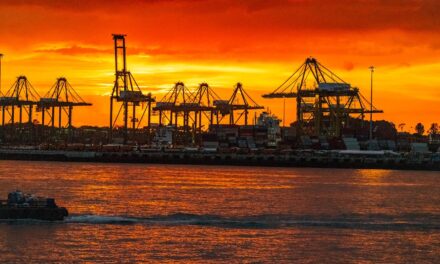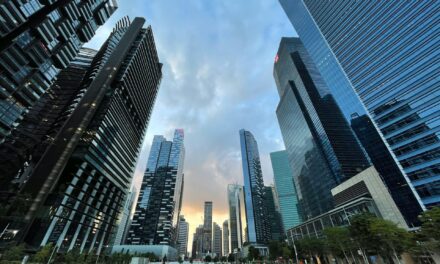Singapore’s economic growth forecast for 2023 may be optimistic given the current weak demand.
Singapore’s economy in the third quarter of 2023 expanded by 1.1% compared to a year prior, Singapore’s Ministry of Trade & Industry said on Wednesday. This was improved from the 0.5% year-on-year growth in the second quarter.
“The finalised Singapore’s third quarter 2023 of 1.1% year-on-year beat initial estimates of 0.7% year-on-year and has been primarily driven by the robust third quarter growth in the accommodation sector of 12.9% year-on-year that extended its second quarter’s 13% year-on-year growth,” Oanda Senior Market Analyst Kelvin Wong told Diplomatic Network (Asia) in an interview.
Growth of the accommodation sector continued to be bolstered by the strong recovery in international visitor arrivals, the ministry said.
“The upbeat third quarter growth reading of the accommodation sector is likely to be driven by the mega F1 Singapore Grand Prix event that took place between September 15 and 17 this year; hence it is likely a one-off growth spurt,” Wong said.
This leaves the growth forecast for the year in question, with Wong saying that it may be a bit optimistic “given the ongoing weak external demand environment”.
Following the finalised results for Singapore’s third quarter, the Ministry of Trade & Industry has chalked in around 1.0% annual growth for 2023. But without a large economic event, like the grand prix, Singapore’s economy will lack the same sort of sugar rush which drove the third quarter’s positive performance.
Meanwhile, weak external demand has been taking its toll on Singapore’s manufacturing sector, which makes up around 20% of its gross domestic product, according to the International Trade Administration.
The manufacturing sector shrank by 4.6% year-on-year, compared to the 7.6% contraction in the second quarter.
The city-state’s manufacturing sector has struggled this year due to poor demand for its goods. High inflation worldwide has led to tighter monetary policies, squeezing global demand for goods.
Singapore’s Ministry of Trade & Industry has forecast annual GDP growth of between 1.0% and 3.0% for 2024.
Wong said that shifts in the US Federal Reserve’s monetary policy will be important to watch.
“After the softer-than-expected US consumer price index print for October that was released last week, market participants have now started to price in an increasingly dovish tilt in US monetary policy,” Wong said, “where it is the end of the interest rate hike cycle with the expected terminal rate set at 5.25% to 5.50% on the Fed funds rate.”
The US CPI print for October was flat from the previous month but increased 3.2% on an annual basis. The print was cooler than expected, leading to a major rally on Wall Street.
Cooling inflation in the US will likely lead to the Fed cutting interest rates. Falling interest rates in the US will provide some major impetus to the global economy and will likely increase external demand for economies like Singapore’s.
“The odds have increased for the first interest rate cut of 25 basis points on the Fed funds rate to come as early as March 2024’s Federal Open Market Committee with a chance of 25% priced by the current reading of the CMEFedwatch tool,” Wong said.
“Hence, these dovish expectations can be too optimistic given the risk of another uptick in oil prices as the Israel-Hamas conflict is still in a ‘fluid state’ plus the preference of Saudi Arabia, the leading OPEC+ is still in favour of extending oil supply cuts into 2024,” he added.
Singapore’s Ministry of Trade & Industry mention that its forecast for next year is based on expectations which exclude “the materialisation of downside risks”. This is likely referring to those mentioned by Wong, as well as any other unforeseen risks.
Even if the Fed funds rate is cut as early as March next year, there will be a time lag for any positive knock-on effects to ripple across global trade. Furthermore, China’s economy will equally play a large role in how 2024 plays out for both the global economy as well as Singapore’s.






